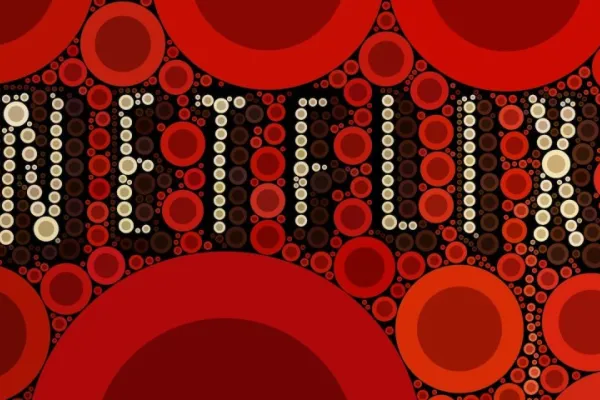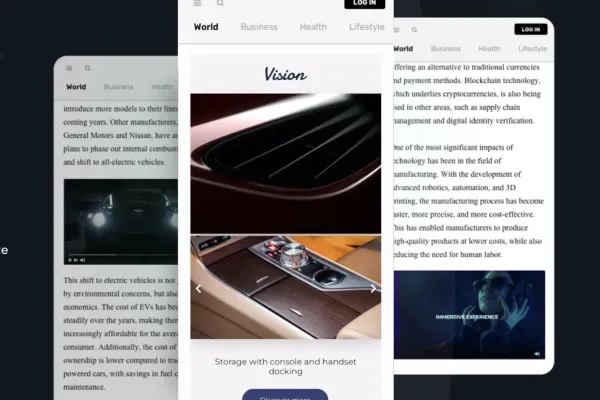
 Details
Details
In a market where exceptional ads are becoming rarer, selecting the best native advertising platform can mean the difference between blending into the noise or standing out with impactful campaigns.
Explore the five best native advertising platforms with us in this post, and we’ll provide you with the insights necessary for you to choose the right native advertising platform for your specific goals and industry.
📥 New E-Book! The 2025 Tech Stack Used by Native Ad Pros
Download the Branded Content Tech Stack 2025—120+ native ad tools, expert commentary, and exclusive case studies.
The Power of Native Ads
What sets native advertising apart is its ability to deliver content that resonates with users without disrupting their online experience.
By mirroring the format and style of the surrounding content, native ads feel more organic and less intrusive, leading to higher click-through rates and brand affinity.
Studies have shown that native ads can outperform traditional display ads, with 40% higher engagement rates and increased brand recall.
In a time where consumers are bombarded with ads, native advertising can offer a refreshing alternative that could drive real business results.
That is, if you do native advertising right, and it all begins with choosing the correct native ad network for your native ads.
READ MORE: Create Better Visual Ads With These Tricks
The Three Types of Native Advertising Platforms
Most marketers and publishers rely on programmatic advertising platforms to simplify the process of native ad transactions.
These platforms use automated technology to match advertisers with the ad inventory of a long list of publishers, and they also help marketers keep their campaigns in check by providing analytics and recommendations for improving your ads.
Let’s briefly touch on the 3 key types of programmatic native advertising platforms that make up the native advertising ecosystem today.
Are you using cross-platform advertising strategies? You should!
Demand-Side Platforms (DSPs) Are Used by Advertisers
Marketers use DSPs to manage and optimize their native advertising campaigns, leveraging advanced targeting options and real-time bidding to reach their target audience.
This is where you’ll input your creatives, specify your target audience, set frequency caps, and manage publisher whitelists or blacklists as necessary, after which the native ad tool handles the remaining tasks.
The process can be almost entirely automated if you wish, as DSPs are great at automatically locating appropriate publisher websites based on user attributes that align with your campaign criteria.
Supply-Side Platform (SSPs) Are Used by Publishers
The supply-side platform (SSP) functions similarly to a DPS but caters to publishers.
This is where publishers can offer their native ad space, and set their criteria for brands wishing to use that ad space. Publishers have a great level of control and are able to dictate which native ad formats, sizes, and minimum impression prices allowable on their platform.
Ad Exchanges Connects the World of Native Ads
Ad exchanges are the bridge between DSPs and SSPs, facilitating the actual buying and selling of ad space through real-time auctions. In other words, it is the platform that connects the marketers on one side and the publishers on the other side.
READ MORE: The Different Formats & Types of Native Ads
The 5 Best Native Ads Platforms of 2025
Alright, let's cut to the chase. Here are our top picks for the five best native ad platforms in 2025 (in no particular order).
1. Outbrain
Outbrain is a great native ads platform if you want to start out with native advertising. It has lots of different ad options like in-feed ads and sponsored content. It's easy for advertisers to show their ads in a long list of very popular publisher sites.
Pros: Outbrain reaches lots of people on top websites and gives advertisers ways to target specific audiences. It also gives detailed reports and analytics on how ads are doing.
Cons: Outbrain might cost more than some other options, but many find it worth the investment because of the results it brings.
Reach: Outbrain has a very large potential audience, and you’ll be able to reach more than a billion people across many different countries using Outbrain.
Supported ad formats: In-feed native advertising and in-article for video ads.
Price: Pricing for Outbrain starts for as low as $0.03 per click but typically ranges from $0.20 to $0.50 per click.
Average CTR: Outbrain's average click-through rate (CTR) ranges from 0.30% to 0.50%.
Example of Publishers: CNN, The Washington Post, Mashable.
READ MORE: Get to Know: Content Recommendation Platforms
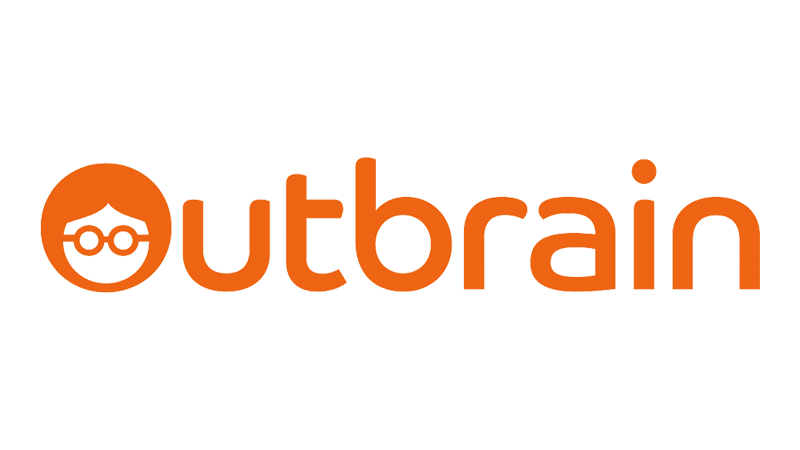
2. Taboola
Taboola is another strong native advertising platform for advertisers who want to reach lots of people with native ads on some of the largest websites in the world. It's easy to use, so advertisers can set up and run their ads without any problems.
Using Outbrain and Taboola combined, you’ll be able to reach a massive audience at a competitive price. Many advertisers use the two platforms together to increase their reach, and this makes them the most widely used native advertising platforms available today.
READ MORE: What Are the Pros & Cons of Native Advertising?
Pros: Taboola gives access to many top websites, letting advertisers show their ads to lots of relevant people. It's also easy to target the right audience for your ads.
Cons: Advertisers might not have as much freedom to customize their ads as they'd like. But even with this limitation, Taboola's performance is usually very good.
Reach: Taboola has one of the best reaches of any native ad platforms, with a potential reach of more than 1.3 billion unique users per month.
Supported ad formats: In-feed ads, in-article ads, video native ads, and recommendation widgets.
Price: Taboola's pricing typically ranges from $0.30 to $0.60 per click.
Average CTR: Taboola's average click-through rate (CTR) ranges from 0.40% to 0.60%, depending on the industry and targeting parameters.
Example of Publishers: NBC News, USA Today, Business Insider, Sky News.
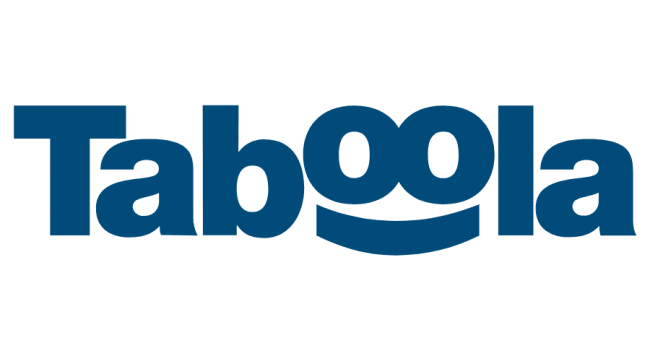
3. Nativo
Nativo specializes in customized native advertising solutions for both publishers and advertisers.
Their native advertising platform offers various ad formats like native articles and display ads. Their platform is designed to prioritize user experience, ensuring that ads blend seamlessly with right content and publisher sites rather than interrupting it.
READ MORE: How Much Does Native Advertising Cost?
Pros: Nativo focuses on delivering ads without using cookies, which helps maintain user privacy. Their advanced analytics tools provide valuable insights for improving campaign performance.
Cons: Although Nativo has many strengths, it may not reach as many people as some other platforms. However, their emphasis on quality often results in higher engagement rates.
Reach: 228M+ users across 7,000+ publishers.
Supported ad formats: Native article, native display, native video, stories.
Price: Nativo's pricing model typically involves a combination of CPM (Cost Per Mille) and CPC (Cost Per Click). You can expect it to be slightly higher than Taboola and Outbrain but with a greater CTR and engagement.
Average CTR: Nativo's average click-through rate (CTR) ranges from 0.50% to 0.70%.
Example Publishers: TIME, a360Media, MOTORTREND.

4. Yahoo Gemini
Yahoo Gemini is a powerhouse in native advertising, offering options across both search and display channels to connect with a broad audience. By leveraging Yahoo's vast native advertising network, advertisers can engage users across multiple digital platforms.
READ MORE: How to Write Native Ad Headlines that Boost Performance
Pros: Yahoo Gemini offers unmatched access to diverse audiences through its extensive network of publishers and partners. Its advanced targeting features ensure that ads reach the right users, resulting in increased engagement.
Cons: Pricing for Yahoo Gemini can fluctuate depending on campaign goals and competition within the platform. Advertisers need to monitor their campaigns closely to achieve optimal performance and cost-effectiveness.
Reach: +50 billion unique impressions per month.
Supported ad formats: Image ad, video, app install ad, carousel ad, Yahoo mail ad, and more.
Price: Yahoo Gemini's native ads pricing typically ranges from $0.40 to $0.60 per click.
Average CTR: Yahoo Gemini's average click-through rate (CTR) ranges from 0.25% to 0.35%.
Example Publishers: Yahoo News, Yahoo Finance, MSN.
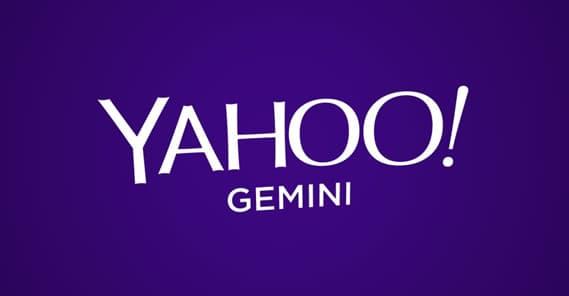
5. Strossle
Strossle sets itself apart by focusing on creating captivating content discovery experiences through native advertising. Their native advertising platform offers various innovative ad formats and customizable campaign options, allowing advertisers to engage audiences in unique ways.
Strossle primarily focuses on the Northern Europe market segment.
Pros: With its emphasis on creativity and flexibility, Strossle empowers advertisers to experiment with different ad formats and campaign strategies. Its user-friendly interface simplifies campaign management and performance tracking.
Cons: While Strossle excels in creativity, its reach may be limited to specific niche markets and geographic locations. Advertisers targeting broader audiences might need to complement their campaigns with other platforms to maximize reach.
Reach: We have not been able to determine the exact potential reach of Strossle but it's safe to say that it's the platform with the lowest potential reach out of the 5 platforms we reviewed.
Supported ad formats: Native article, native display.
Price: With Strossle, you can purchase distribution both through CPC and CPM. You can expect prices ranging from $0.30 to $1 per click.
Average CTR: Strossle's average click-through rate (CTR) ranges from 0.50% to 0.90%.
Example Publishers: MG, Dentsu, Hellokids.com.

You can use more than one platforms for your native ads
In summary, to make native advertising work, it's crucial to pick the best native ads platform and plan carefully to reach the right audience. You should test identical campaigns on each of the native ads platforms and see which one(s) provide you with the best results.
Your formula of success may very well be different from the business next door, so it’s important to make up your own strategy to maximize your ROI from your campaigns.
By using any of these 5 popular platforms for native advertising and making ads that appeal to users, we’re confident you’ll be able to meet your campaign goals and have success with your native advertising efforts.
READ MORE: The Best Spy-Tools for Native Ads
